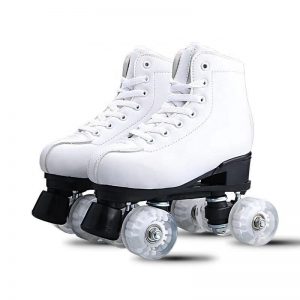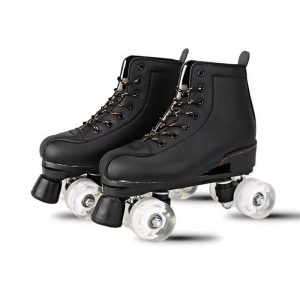Most skateboard wheels are made of polyurethane material, which is often called synthetic rubber. This glue can change the performance of the wheel by changing the ratio of chemical components, so as to meet the needs of skaters in different scenes.
The hardness units commonly used in skateboard wheels are a, B, and D. Generally, 100A, 85A, 80B, etc. are marked on the outer packaging of skateboard wheels. These values indicate the hardness of the wheel. The higher the number in front, the greater the hardness of the wheel, so 100A wheels are harder than 85A wheels. Next, skateboard wheel manufacturers will introduce several common hardnesses.
1. 75a-85a: Wheels within this hardness range are suitable for rough roads, easy to run over small stones and cracks, have low foot shaking and low sliding noise, so they are suitable for brushing teeth on the street instead of walking.
2, 85a-95a: The hardness of the dual-purpose wheel is higher than the previous one. It can consider brushing the street and practicing movements every day. If you like to practice various moves and often brush your teeth on the street, wheels within this hardness range are your choice.
3, 95a-101a: Action hard wheels are the best choice for professional skaters. Wheels within this hardness range are not only suitable for moving on flat roads, but also for entering bowls or practicing throwing tables and other props. It is necessary for professional places such as skateparks and skate parks. Hardness over 100A is usually used by experienced skaters.
The evolution of skateboard wheels represents the innovation of material science and the development of skateboarding. The evolution of wheels represents the history of skateboarding. Skateboard wheels are also very special. Small wheels start fast, but lack endurance and are suitable for skill; large wheels are easy to slide on uneven ground.









